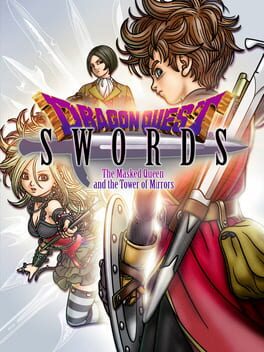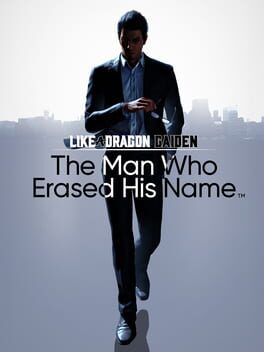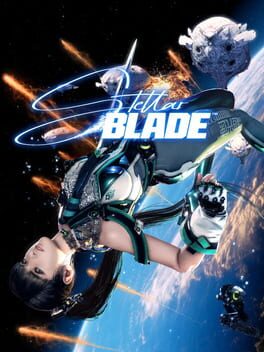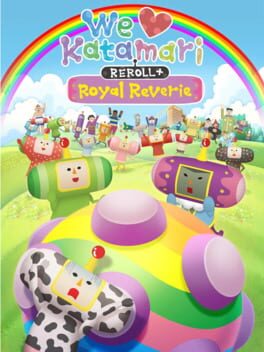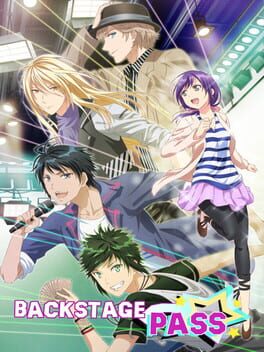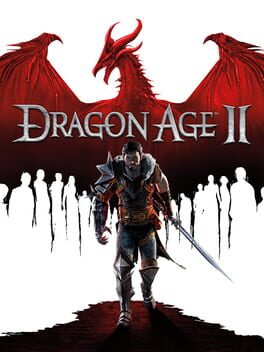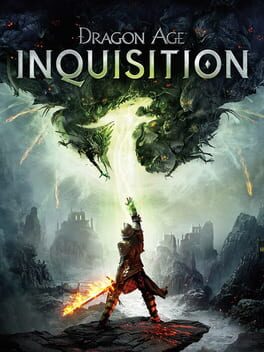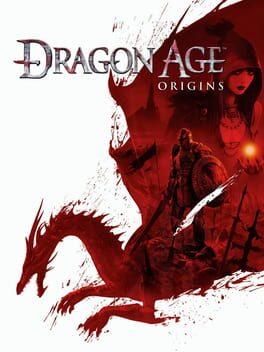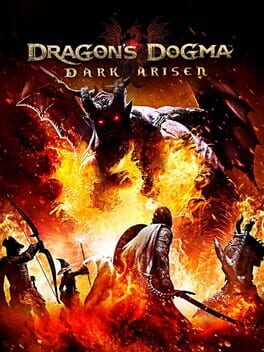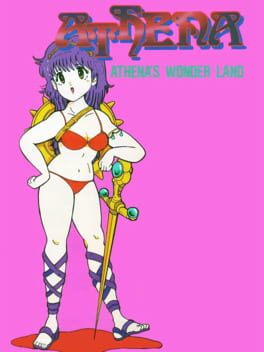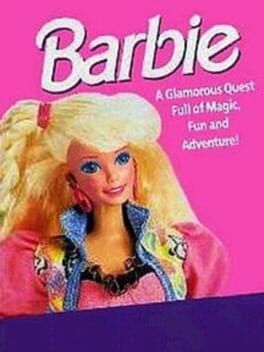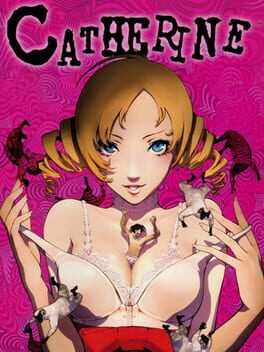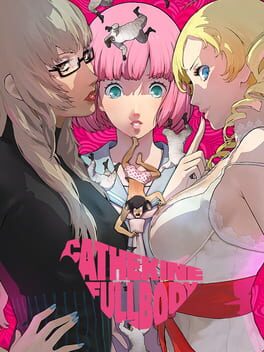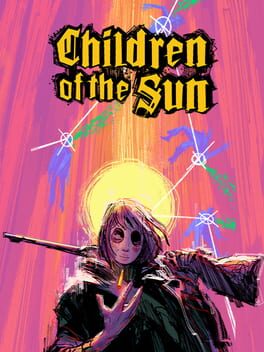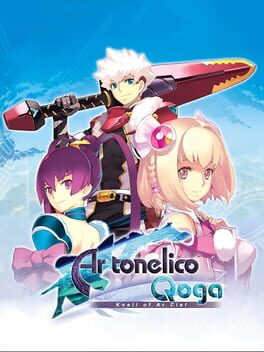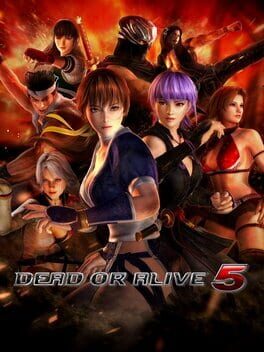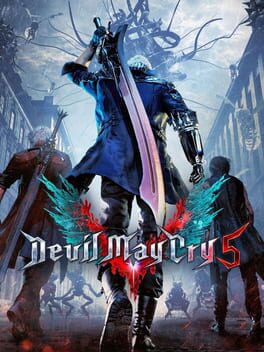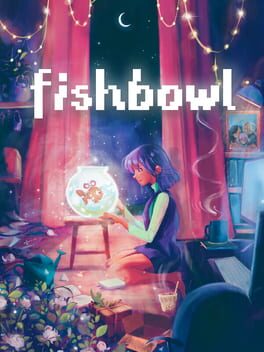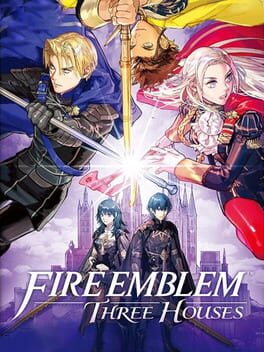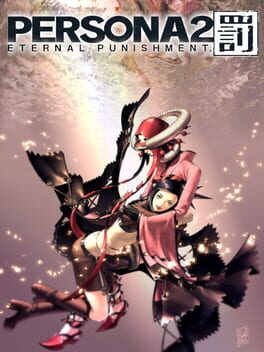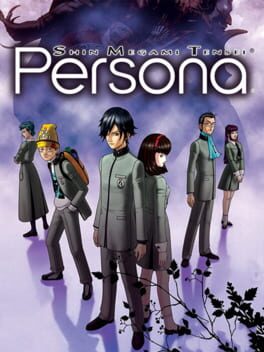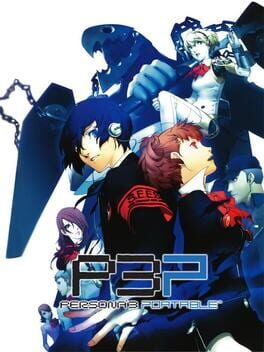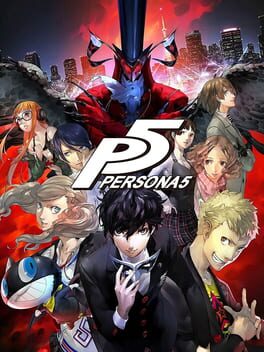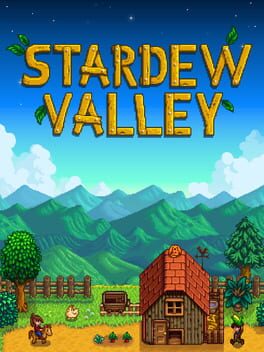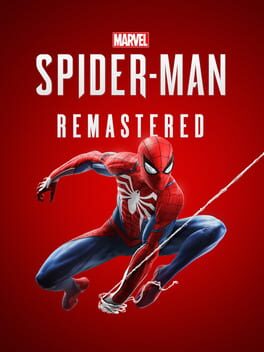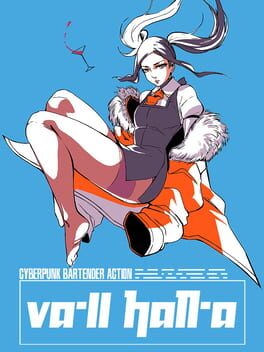Labraunda
212 reviews liked by Labraunda
[Average Reading Time: 8 Minutes]
A mute, a drunken womanizer, a french fashionista, and a momma's boy are working together to take down a big bad guy. Surely they would work better together if the game worked at all!
I discovered my love for the Dragon Quest series of games a little over half a decade ago when I downloaded the mobile version of the first game on a whim. Since then, I've always been excited to see the future of the series, as well as the spin-offs released in the past. One spin-off that caught my attention was the Wii game, Dragon Quest Swords: The Masked Queen and the Tower of Mirrors. That's a mouthful, so from here on out, I'll simply refer to it as Dragon Quest Swords.
Dragon Queest Swords offers a very unique gameplay experience. It's what I would call a rail action RPG. Imagine a rail shooter. You're constantly moving forward until you have to stop to shoot at enemies. Now, replace shooting enemies with slashing a sword at monsters. On paper, it sounds interesting. Not many games opt for a melee focus when being on-rails. As interesting as it is though, we must ask an important question: Does it stick the landing?
Sadly, I can't say that it does. So, to attack, you must swing the Wii remote. Of course, it's not as simple as just swinging the remote. Moving the controller in specific directions executes slashes in specific directions. Swing vertically for a vertical slice, horizontally for a horizontal slice, you get the idea. You also have a stab move, which requires you to thrust the controller towards the screen. This all sounds simple, but you must also remember that this was a Wii game that released in 2007, which means it's less than accurate, to say the least. Sometimes you'll swing the sword and wind up stabbing. Sometimes you'll stab and wind up swinging. This gets highly annoying, especially as you begin to encounter monsters that are more effectively taken down by specific moves.
Along with slashing, you are also able to focus your strikes on a specific area of the screen by moving the cursor to a specific spot and hitting A. This helps with targeting, allowing you to have vertical and horizontal slices go through areas that they normally wouldn't and allowing for stabs to hit a specific spot when the input feels like being read by the game.
This also helps with targeting specific enemy attacks that can be reflected with a sword strike. Many enemies will shoot projectiles that you can either only block with your shield, can either block or deflect with a sword strike, or reflect back at a foe with a sword strike. This all depends on the color of the move as the prompts appear to you before they make contact. At first, it's as simple as seeing the telegraph, highlighting the area the move is going to land and hitting A, and then swinging the sword when the timing is right to send it back. As the game goes on, though, you'll begin encountering scenarios where you're on the receiving end of multiple of these moves rapidly, requiring you to react accordingly quickly. Many times I've been hit with multiple deflectable moves because I was only able to deflect one and didn't have enough time to set up for another deflection.
You'll also have times where the deflection zones line up with where a slash would go without doing the A button setup, and other times where you're getting hit by multiple deflecting moves at once in a line and now you need to hope that when you do the specific sword strike the game is asking for, it registers properly. Input delay is very real with this game, as well, which does not help with these moves that require specific timing.
Thankfully, this isn't all the game offers in terms of combat gameplay. At any time, you can open your inventory to use a healing item, or have your party member (when you get one) use an attacking, restorative, or buffing spell to even the odds. You also have access to "Master Strokes", which are your special moves that deal big damage to all enemies on screen. By hitting foes, you build up a meter that allows you to execute these moves. Fill it up and you can activate these at any time during combat. Of course, in order to do the move you need to move the Wii remote in whatever directions they ask for. Fail to do so properly, and you'll either do less damage with the move or the move will fail to execute!
Despite my problems with the combat, when you're fighting anywhere between 1-3 enemies at a time, it's manageable. Not good, but manageable. It's when you're in scenarios where there's 4+ enemies on screen and you're slashing away at one while the other's readying an attack and now you have to get your shield up and oh no, the enemy you were wailing on moved away from you and now another enemy is healing them and whichever enemy you're now focusing on while any other enemy on the screen can do something to ruin your life...
...is where the game truly falls apart.
It truly is a shame that the combat wound up like this. The Wii was home to a plethora of motion based games, and as I played this game, I began to understand more and more why casual games for the console required less-specific motions with the controller. Motion controls simply weren't at the proper point for a game like this. In an era where VR has lead to an era where motion controls in games are more reliable than ever, leading me to want to experience them more, I can only say that Dragon Quest Swords was ahead of its time. Had it released in this generation as a VR title, I feel that it wouldn't have suffered from these problems. At the very least, I would be able to stab at an enemy and actually pull it off on the first try.
So, outside of the combat, we also have a town to explore. Here you can buy items to restore health, as well as equipment to raise your stats. You can also temper your sword, making it more powerful and allowing you access to more Master Strokes. It's also here where the bulk of the plot happens, which is very basic, for the most part. There are twists here and there and there are stakes, but it never really feels too compelling, sadly.
What is fun here are the character designs and the voice acting. I'll start with the voice acting first. The cast is pretty well-directed, and the actors pull off their lines very well. Hearing people speak to me in this world was one of the highlights, since there are some fun writing bits here and there.
Since this is a Dragon Quest game, we have Akira Toriyama (RIP) doing the designs for the cast. The enemies are wonderful looking, as always. The main party also hosts a number of interesting designs. One of my favorites has to be Claymore, who's the protagonist's father. As you explore the town and fight baddies, you see a number of familiar designs all getting the 3D model treatment, and they all translate really well! It's because of this that I find Fleurette's design to be funny in comparison since she clashes so much with the world around her. It's a great design, don't get me wrong, but she looks like she walked into the wrong game and just kinda hung out there!
As much as I enjoy the characters and world here, it does not save the gameplay. Through some effort, you can get far and beat it, but I found myself stopping right at the final boss. Without spoiling ANYTHING SPECIFIC, here's why. So, the final boss has a special move they can pull off, and when they do you are prompted to slash repeatedly at the screen to reduce damage as much as possible. Despite almost filling the meter keeping track of my strokes on the side of the screen completely, I was one-hit killed by the move! This never happened at any earlier point in the game. This also happened after a long session with intent of beating the game, which did not add to my mood that night.
Despite being a spin-off, it still has that Dragon Quest blood and wants you to grind! Want cash for better armor or levels to keep your stats beefy? Better go spend a non-specific amount of time grinding for it! Before facing the final boss, I never even considered grinding. The difficulty curve was adjusting properly as I played, so I felt no need to ever go back and boost my stats before any stage. Now, right at the end, the game is telling me to go back and do all that? If this were a normal RPG, I would've. However, grinding in Dragon Quest Swords means any additional amount of time flailing your arm around to boost stats. Just thinking about returning to old areas to spend hours swinging that sword around strictly for levels and cash sounds exhausting, physically exhausting. No thanks.
Overall, I can't in good faith recommend anyone play this game. The world is pretty and the characters are fun, but the story is unengaging and the gameplay is dreadful. If this game were to get a remake for VR headsets that took advantage of the developments that have occurred over the 17 years since its initial release, though, I'd happily give it another shot. As it is now, though, I can't implore you enough to STAY AWAY!
One last thing I want to note before I end this review. I want to talk a little more about Claymore. His backstory is that he fought the evil demon five years ago and lost the ability to use his arm to fight as a result. The more I looked at him and thought about him, the more I began to realize that his story is similar to that of Dunban from Xenoblade Chronicles, who also lost the ability to fight with his dominant arm in combat. Then, I began to notice that his voice sounded similar to Dunban's, and I thought to myself "Did they really get this guy to do Dunban's voice for that game? That would be very funny." I then make my way to the MobyGames page for the voice actor, Wayne Forester. As I scrolled though his roles, I did find that he offered his talents for Xenoblade Chronicles. However, it wasn't for Dunban. It was for someone else. It was for... HIM!
A mute, a drunken womanizer, a french fashionista, and a momma's boy are working together to take down a big bad guy. Surely they would work better together if the game worked at all!
I discovered my love for the Dragon Quest series of games a little over half a decade ago when I downloaded the mobile version of the first game on a whim. Since then, I've always been excited to see the future of the series, as well as the spin-offs released in the past. One spin-off that caught my attention was the Wii game, Dragon Quest Swords: The Masked Queen and the Tower of Mirrors. That's a mouthful, so from here on out, I'll simply refer to it as Dragon Quest Swords.
Dragon Queest Swords offers a very unique gameplay experience. It's what I would call a rail action RPG. Imagine a rail shooter. You're constantly moving forward until you have to stop to shoot at enemies. Now, replace shooting enemies with slashing a sword at monsters. On paper, it sounds interesting. Not many games opt for a melee focus when being on-rails. As interesting as it is though, we must ask an important question: Does it stick the landing?
Sadly, I can't say that it does. So, to attack, you must swing the Wii remote. Of course, it's not as simple as just swinging the remote. Moving the controller in specific directions executes slashes in specific directions. Swing vertically for a vertical slice, horizontally for a horizontal slice, you get the idea. You also have a stab move, which requires you to thrust the controller towards the screen. This all sounds simple, but you must also remember that this was a Wii game that released in 2007, which means it's less than accurate, to say the least. Sometimes you'll swing the sword and wind up stabbing. Sometimes you'll stab and wind up swinging. This gets highly annoying, especially as you begin to encounter monsters that are more effectively taken down by specific moves.
Along with slashing, you are also able to focus your strikes on a specific area of the screen by moving the cursor to a specific spot and hitting A. This helps with targeting, allowing you to have vertical and horizontal slices go through areas that they normally wouldn't and allowing for stabs to hit a specific spot when the input feels like being read by the game.
This also helps with targeting specific enemy attacks that can be reflected with a sword strike. Many enemies will shoot projectiles that you can either only block with your shield, can either block or deflect with a sword strike, or reflect back at a foe with a sword strike. This all depends on the color of the move as the prompts appear to you before they make contact. At first, it's as simple as seeing the telegraph, highlighting the area the move is going to land and hitting A, and then swinging the sword when the timing is right to send it back. As the game goes on, though, you'll begin encountering scenarios where you're on the receiving end of multiple of these moves rapidly, requiring you to react accordingly quickly. Many times I've been hit with multiple deflectable moves because I was only able to deflect one and didn't have enough time to set up for another deflection.
You'll also have times where the deflection zones line up with where a slash would go without doing the A button setup, and other times where you're getting hit by multiple deflecting moves at once in a line and now you need to hope that when you do the specific sword strike the game is asking for, it registers properly. Input delay is very real with this game, as well, which does not help with these moves that require specific timing.
Thankfully, this isn't all the game offers in terms of combat gameplay. At any time, you can open your inventory to use a healing item, or have your party member (when you get one) use an attacking, restorative, or buffing spell to even the odds. You also have access to "Master Strokes", which are your special moves that deal big damage to all enemies on screen. By hitting foes, you build up a meter that allows you to execute these moves. Fill it up and you can activate these at any time during combat. Of course, in order to do the move you need to move the Wii remote in whatever directions they ask for. Fail to do so properly, and you'll either do less damage with the move or the move will fail to execute!
Despite my problems with the combat, when you're fighting anywhere between 1-3 enemies at a time, it's manageable. Not good, but manageable. It's when you're in scenarios where there's 4+ enemies on screen and you're slashing away at one while the other's readying an attack and now you have to get your shield up and oh no, the enemy you were wailing on moved away from you and now another enemy is healing them and whichever enemy you're now focusing on while any other enemy on the screen can do something to ruin your life...
...is where the game truly falls apart.
It truly is a shame that the combat wound up like this. The Wii was home to a plethora of motion based games, and as I played this game, I began to understand more and more why casual games for the console required less-specific motions with the controller. Motion controls simply weren't at the proper point for a game like this. In an era where VR has lead to an era where motion controls in games are more reliable than ever, leading me to want to experience them more, I can only say that Dragon Quest Swords was ahead of its time. Had it released in this generation as a VR title, I feel that it wouldn't have suffered from these problems. At the very least, I would be able to stab at an enemy and actually pull it off on the first try.
So, outside of the combat, we also have a town to explore. Here you can buy items to restore health, as well as equipment to raise your stats. You can also temper your sword, making it more powerful and allowing you access to more Master Strokes. It's also here where the bulk of the plot happens, which is very basic, for the most part. There are twists here and there and there are stakes, but it never really feels too compelling, sadly.
What is fun here are the character designs and the voice acting. I'll start with the voice acting first. The cast is pretty well-directed, and the actors pull off their lines very well. Hearing people speak to me in this world was one of the highlights, since there are some fun writing bits here and there.
Since this is a Dragon Quest game, we have Akira Toriyama (RIP) doing the designs for the cast. The enemies are wonderful looking, as always. The main party also hosts a number of interesting designs. One of my favorites has to be Claymore, who's the protagonist's father. As you explore the town and fight baddies, you see a number of familiar designs all getting the 3D model treatment, and they all translate really well! It's because of this that I find Fleurette's design to be funny in comparison since she clashes so much with the world around her. It's a great design, don't get me wrong, but she looks like she walked into the wrong game and just kinda hung out there!
As much as I enjoy the characters and world here, it does not save the gameplay. Through some effort, you can get far and beat it, but I found myself stopping right at the final boss. Without spoiling ANYTHING SPECIFIC, here's why. So, the final boss has a special move they can pull off, and when they do you are prompted to slash repeatedly at the screen to reduce damage as much as possible. Despite almost filling the meter keeping track of my strokes on the side of the screen completely, I was one-hit killed by the move! This never happened at any earlier point in the game. This also happened after a long session with intent of beating the game, which did not add to my mood that night.
Despite being a spin-off, it still has that Dragon Quest blood and wants you to grind! Want cash for better armor or levels to keep your stats beefy? Better go spend a non-specific amount of time grinding for it! Before facing the final boss, I never even considered grinding. The difficulty curve was adjusting properly as I played, so I felt no need to ever go back and boost my stats before any stage. Now, right at the end, the game is telling me to go back and do all that? If this were a normal RPG, I would've. However, grinding in Dragon Quest Swords means any additional amount of time flailing your arm around to boost stats. Just thinking about returning to old areas to spend hours swinging that sword around strictly for levels and cash sounds exhausting, physically exhausting. No thanks.
Overall, I can't in good faith recommend anyone play this game. The world is pretty and the characters are fun, but the story is unengaging and the gameplay is dreadful. If this game were to get a remake for VR headsets that took advantage of the developments that have occurred over the 17 years since its initial release, though, I'd happily give it another shot. As it is now, though, I can't implore you enough to STAY AWAY!
One last thing I want to note before I end this review. I want to talk a little more about Claymore. His backstory is that he fought the evil demon five years ago and lost the ability to use his arm to fight as a result. The more I looked at him and thought about him, the more I began to realize that his story is similar to that of Dunban from Xenoblade Chronicles, who also lost the ability to fight with his dominant arm in combat. Then, I began to notice that his voice sounded similar to Dunban's, and I thought to myself "Did they really get this guy to do Dunban's voice for that game? That would be very funny." I then make my way to the MobyGames page for the voice actor, Wayne Forester. As I scrolled though his roles, I did find that he offered his talents for Xenoblade Chronicles. However, it wasn't for Dunban. It was for someone else. It was for... HIM!
Like a Dragon Gaiden is a spin-off of the mainline Yakuza/Like a Dragon series. Taking place alongside the events of Yakuza: Like a Dragon, Gaiden brings back the old-school beat 'em up combat style and follows the series original protagonist Kazuma Kiryu after the events of Yakuza 6 when he disappeared from the world and signed a pact with the secret organization the "Daidoji faction". Now under the codename "Joryu" Kiryu operates as one of the Daidoji's secret agents from the shadows until a mysterious figure who seems to know Kiryu's past draws him out of hiding and into a whole new conflict.
Gaiden is the shortest Yakuza game taking me merely 30 hours (As according to the in-game time counter) to not only beat the game, but to 100% it and get the platinum trophy as well. However due to being so short it's also one of the most focused and tightly paced Yakuza games in the whole series featuring some of the best moments in the whole series including the best final boss and best antagonist as well with some great twists too.
Gaiden is also the best Kiryu has ever felt to play in the entire series running on the Dragon Engine and giving him 2 styles similar to Yagami in Judgment and feeling very fast, fluid and stylish. On top of his standard Yakuza style which incorporates many different moves from all Kiryu's past styles in previous games and serves as the heavy style to be used on one-on-one fights and bosses, Kiryu now has the Agent style which allows him to fight with advanced techniques he learned from the Daidoji based on martial arts from all over the world alongside various spy-like gadgets like a grappling gun, exploding cigarettes and even jet powered shoes the agent style is tons of fun and acts as the crowd control style Kiryu uses when up against waves of enemies.
Gaiden also brings back a fan favorite system from Yakuza 0 allowing you to purchase skills with money, but it combines that with a similar SP system that the Judgment games have as well. You earn SP by completing challenges and side missions for Sotenbori's jack-of-all-trades Akame. There's also gear and stat increases similar to Like a Dragon. In a way Gaiden acts as a jack-of-all-trades itself and combines parts of systems from all past Yakuza games. I also have to mention that I enjoy how most sub-stories have something to do with Kiryu's past.
While Gaiden may be the shortest Yakuza game it still has just as many side activities and mini-games to do like the classics such as pool, darts, karaoke, gambling, Majong, Shogi and even the return of the fan favorite...Pocket Circuit! There's also a colosseum where you can partake in both one-on-one battles and clan battles where you can fight with a group of NPC characters you recruit and the colosseum even lets you play as other characters besides Kiryu as well.
Overall Gaiden is a short, but fantastic companion piece to Yakuza 7 giving Kiryu even more development and a new side to his character as he works as a secret agent with no name while fleshing out his side of the events that happened in Yakuza 7. There are plenty of memorable sub-stories, side activities and good fan service moments for those who have experienced Kiryu's journey from the beginning and the combat is the best the mainline Yakuza series has ever felt. The antagonist and final boss, their motivations and the themes have so much depth to think about and I would easily count them among the series absolute best as well and even if we never get another Yakuza game in the classic beat 'em up style I can think of no more fitting way for it to go out than Gaiden's incredible finale.
Gaiden is the shortest Yakuza game taking me merely 30 hours (As according to the in-game time counter) to not only beat the game, but to 100% it and get the platinum trophy as well. However due to being so short it's also one of the most focused and tightly paced Yakuza games in the whole series featuring some of the best moments in the whole series including the best final boss and best antagonist as well with some great twists too.
Gaiden is also the best Kiryu has ever felt to play in the entire series running on the Dragon Engine and giving him 2 styles similar to Yagami in Judgment and feeling very fast, fluid and stylish. On top of his standard Yakuza style which incorporates many different moves from all Kiryu's past styles in previous games and serves as the heavy style to be used on one-on-one fights and bosses, Kiryu now has the Agent style which allows him to fight with advanced techniques he learned from the Daidoji based on martial arts from all over the world alongside various spy-like gadgets like a grappling gun, exploding cigarettes and even jet powered shoes the agent style is tons of fun and acts as the crowd control style Kiryu uses when up against waves of enemies.
Gaiden also brings back a fan favorite system from Yakuza 0 allowing you to purchase skills with money, but it combines that with a similar SP system that the Judgment games have as well. You earn SP by completing challenges and side missions for Sotenbori's jack-of-all-trades Akame. There's also gear and stat increases similar to Like a Dragon. In a way Gaiden acts as a jack-of-all-trades itself and combines parts of systems from all past Yakuza games. I also have to mention that I enjoy how most sub-stories have something to do with Kiryu's past.
While Gaiden may be the shortest Yakuza game it still has just as many side activities and mini-games to do like the classics such as pool, darts, karaoke, gambling, Majong, Shogi and even the return of the fan favorite...Pocket Circuit! There's also a colosseum where you can partake in both one-on-one battles and clan battles where you can fight with a group of NPC characters you recruit and the colosseum even lets you play as other characters besides Kiryu as well.
Overall Gaiden is a short, but fantastic companion piece to Yakuza 7 giving Kiryu even more development and a new side to his character as he works as a secret agent with no name while fleshing out his side of the events that happened in Yakuza 7. There are plenty of memorable sub-stories, side activities and good fan service moments for those who have experienced Kiryu's journey from the beginning and the combat is the best the mainline Yakuza series has ever felt. The antagonist and final boss, their motivations and the themes have so much depth to think about and I would easily count them among the series absolute best as well and even if we never get another Yakuza game in the classic beat 'em up style I can think of no more fitting way for it to go out than Gaiden's incredible finale.
Lost Judgment
2021
Lost Judgment
2021
Popular perception of sequels suggests they’re usually worse than the original. This arguably rings truer for films than other media, but I have frequently felt mystified when playing game sequels I’d often heard described as better than their predecessor, usually finding that other cornerstones of the experience are neglected or lost in pursuit of mechanical refinement. This is common enough for me that it’s part of why, despite loving the first, I deliberately avoided playing Lost Judgment for over a year. I’ve rarely been so glad to have my misgivings dispelled.
Judgment’s walljumping, leapfrogging and cancelling moves via EX Boost were exactly the sort of expressive tools that RGG Studio’s combat always needed, but Lost Judgment takes several further steps to result in what’s by far their most cohesive system. Buffing Yagami’s attack speed, damage or knockdown resistance through dodges, charged attacks and parries respectively makes styles far more functionally distinct than the first game’s conceptually sound but imbalanced attempt at separating them into fighting individuals and crowds. Get two or more of these active at once and you can do some pretty fun stuff, EX-actions feeling more congruous now that Yagami’s able to do cool things without them. There’s less to it than it looks, but juggling being easier and more consistent pull off than in Judgment allows for more creativity on the player’s part and encourages better knowledge of Yagami’s moves, while also retaining just enough of a barrier that it feels more proportional to its reward than at least two other Dragon Engine titles’ combat. What accentuates this is that enemies are similarly fleshed out, between heavy ones that can throw each other at you and new status effects to watch out for among those with weapons, while bosses are (generally) no longer Frankensteined out of old assets and feel all the more distinctive for it. There’s enough to chew on that I recall feeling like there was a party going on between my hands at this part early on in my first playthrough.
Most full-on action games are still better alternatives to Lost Judgment if combat specifically is what you’re after, but that’s fine, because it’s stuffed to the gills with other things to do. It deserves as much credit for how much more enjoyable it’s made traversing the hub cities this time around, especially Ijincho. With the simple addition of a skateboard, what was once a mire of either absent-mindedly holding forward for prolonged periods or taxi-induced cuts to black becomes a giant playground of endless obstacles to jump over and grind along. Climbing hasn’t much more going on than something like Uncharted’s, but the grip meter at least adds a degree of tension to it, enough so that there are timed challenges in the (very handy) Gauntlet menu. Side cases retain the thematic harmony with the main plot that they enjoyed in the first game, though I did very few on my first run since I was so gripped by wanting to see what happened next.
What the plot comparatively lacks in personal stakes for Yagami, it makes up for in being thought provoking. The issues at its core are treated with a healthy dose of nuance to the extent that even Yagami’s friends will occasionally comment on sharing Kuwana’s perspective; the Mole was, and is, great in his own way, but they made the right call not trying to one up him and instead opting for an antagonist who’s not so clear cut, handling the (usually tired) angle of grey morality with grace. There’s an apparent step up on various levels of its presentation too. Few bosses have had quite so mythical a backdrop as that of Tesso’s first encounter, with its neon-lit rain and eerie throat singing, while the modellers and artists have gotten noticeably better at making characters created from scratch look believable. I was genuinely surprised to learn that Akutsu isn’t facescanned, for instance, a marked contrast from the days of Yakuza protagonists looking uncanny when onscreen alongside obviously real people.
I’ve only just now mentioned Yakuza by name because, increasingly, I feel that Judgment shouldn’t be lumped in with it as though the two are synonymous. I mentioned part of why I avoided playing Lost Judgment for so long at the start; the other part was Yakuza, or more specifically its approach to sequels. They’d conditioned me to expect that Lost Judgment would either diminish or totally axe some of the original’s good ideas for seemingly no reason other than difference for difference’s sake, something likely brought on by a release schedule that occasionally feels akin to an assembly line. It not only does nothing of the kind, it’s marinated in a palpable albeit not completely successful effort at improvement from top to bottom. In any case, the first Judgment did better than most of its sister series in considerably less time despite technically being a new IP, so I don’t think it’s unreasonable to suggest one has an appeal which the other lacks.
For me, that appeal lies in the relative clarity of what this now-duology wants to be and do. As aforementioned, Lost Judgment isn’t an entirely rosy sequel; among other things, Hoshino’s dragged through the mud to such a cartoonish extent I can only assume one of the writers (understandably) wanted Saori for himself, detective segments are barebones as ever and perhaps the only part of Kaito’s DLC that isn’t underwhelming is its price tag. These are only slight blemishes, though, on what’s otherwise a game which has dug in its heels and demonstrated unwavering belief in its identity as an (arguably for the first time) unambiguously solid beat ‘em up with plenty to say and plenty else to do that all ties into it. I’m simultaneously interested in a potential third Judgment and so satisfied with the two we now have that I don’t think it’s really needed. It’s almost enough to make a man forget about Sawa-sensei for a split second.
Judgment’s walljumping, leapfrogging and cancelling moves via EX Boost were exactly the sort of expressive tools that RGG Studio’s combat always needed, but Lost Judgment takes several further steps to result in what’s by far their most cohesive system. Buffing Yagami’s attack speed, damage or knockdown resistance through dodges, charged attacks and parries respectively makes styles far more functionally distinct than the first game’s conceptually sound but imbalanced attempt at separating them into fighting individuals and crowds. Get two or more of these active at once and you can do some pretty fun stuff, EX-actions feeling more congruous now that Yagami’s able to do cool things without them. There’s less to it than it looks, but juggling being easier and more consistent pull off than in Judgment allows for more creativity on the player’s part and encourages better knowledge of Yagami’s moves, while also retaining just enough of a barrier that it feels more proportional to its reward than at least two other Dragon Engine titles’ combat. What accentuates this is that enemies are similarly fleshed out, between heavy ones that can throw each other at you and new status effects to watch out for among those with weapons, while bosses are (generally) no longer Frankensteined out of old assets and feel all the more distinctive for it. There’s enough to chew on that I recall feeling like there was a party going on between my hands at this part early on in my first playthrough.
Most full-on action games are still better alternatives to Lost Judgment if combat specifically is what you’re after, but that’s fine, because it’s stuffed to the gills with other things to do. It deserves as much credit for how much more enjoyable it’s made traversing the hub cities this time around, especially Ijincho. With the simple addition of a skateboard, what was once a mire of either absent-mindedly holding forward for prolonged periods or taxi-induced cuts to black becomes a giant playground of endless obstacles to jump over and grind along. Climbing hasn’t much more going on than something like Uncharted’s, but the grip meter at least adds a degree of tension to it, enough so that there are timed challenges in the (very handy) Gauntlet menu. Side cases retain the thematic harmony with the main plot that they enjoyed in the first game, though I did very few on my first run since I was so gripped by wanting to see what happened next.
What the plot comparatively lacks in personal stakes for Yagami, it makes up for in being thought provoking. The issues at its core are treated with a healthy dose of nuance to the extent that even Yagami’s friends will occasionally comment on sharing Kuwana’s perspective; the Mole was, and is, great in his own way, but they made the right call not trying to one up him and instead opting for an antagonist who’s not so clear cut, handling the (usually tired) angle of grey morality with grace. There’s an apparent step up on various levels of its presentation too. Few bosses have had quite so mythical a backdrop as that of Tesso’s first encounter, with its neon-lit rain and eerie throat singing, while the modellers and artists have gotten noticeably better at making characters created from scratch look believable. I was genuinely surprised to learn that Akutsu isn’t facescanned, for instance, a marked contrast from the days of Yakuza protagonists looking uncanny when onscreen alongside obviously real people.
I’ve only just now mentioned Yakuza by name because, increasingly, I feel that Judgment shouldn’t be lumped in with it as though the two are synonymous. I mentioned part of why I avoided playing Lost Judgment for so long at the start; the other part was Yakuza, or more specifically its approach to sequels. They’d conditioned me to expect that Lost Judgment would either diminish or totally axe some of the original’s good ideas for seemingly no reason other than difference for difference’s sake, something likely brought on by a release schedule that occasionally feels akin to an assembly line. It not only does nothing of the kind, it’s marinated in a palpable albeit not completely successful effort at improvement from top to bottom. In any case, the first Judgment did better than most of its sister series in considerably less time despite technically being a new IP, so I don’t think it’s unreasonable to suggest one has an appeal which the other lacks.
For me, that appeal lies in the relative clarity of what this now-duology wants to be and do. As aforementioned, Lost Judgment isn’t an entirely rosy sequel; among other things, Hoshino’s dragged through the mud to such a cartoonish extent I can only assume one of the writers (understandably) wanted Saori for himself, detective segments are barebones as ever and perhaps the only part of Kaito’s DLC that isn’t underwhelming is its price tag. These are only slight blemishes, though, on what’s otherwise a game which has dug in its heels and demonstrated unwavering belief in its identity as an (arguably for the first time) unambiguously solid beat ‘em up with plenty to say and plenty else to do that all ties into it. I’m simultaneously interested in a potential third Judgment and so satisfied with the two we now have that I don’t think it’s really needed. It’s almost enough to make a man forget about Sawa-sensei for a split second.
Lost Judgment
2021
This is it, this is peak RGG Studios and serves as a bittersweet swan-song for Nagoshi before leaving SEGA, who could've imagined his last game with the company would also be his best? This game took everything that made the first Judgment amazing and improved upon it in almost every way possible. This is peak fiction and easily one of my new all time favorite games. Also easily GOTY for me.
Lost Judgment is one of the best detective mystery, courtroom dramas I've ever seen in all of fiction. The way the main plot starts out with what seems to be a cut and dry case of sexual battery and just slowly builds into some crazy grand conspiracy as more details are gradually revealed is excellently written and cohesive. Also the central theming around bullying and its consequences is both relatable and realistic, it hits hard and is emotional as hell and the way the game tackles corruption in the justice system is also just as realistic and relatable as the bullying themes. Lost Judgment is a shining example of moral greyness and clashing ideals where even the 'villains' have well thought out sympathetic motives.
While Lost Judgment has no direct connection to the first in plot, it does have it in characters. This game expects you've played the first Judgment because it constantly brings back past characters and most main characters like Yagami, Kaito, Sugiura and Tsukumo already had their main arcs in the first game and don't get much development in this one, so I would implore anyone reading this to play the first Judgment before this one if you haven't already. With that said Takayuki Yagami is easily one of my new favorite protagonists in video games, I already liked him a lot in the first Judgment, but this game made me love him even more. A Former defense attorney turned detective, charismatic, witty, honorable with a strong sense of justice and desire to always search for the truth also an adept in kung-fu? Maybe I'm biased because I love detectives so much, but how can you not love him? On a side note new characters like Kuwana, Soma, and Sawa among others get efficient character arcs instead and Kuwana especially has become one of my all time favorite characters.
RGG games are known for having enormous amounts of side content and Lost Judgment is no different. Naturally you have all the classics RGG games are known for, your underground gambling halls, your batting cages and arcades (At the arcade you can plays darts, and games like Virtua Figther 5, Space Harrier and Super Hang-On among others) you also have the drone racing and VR board game introduced in the first Judgment, but one big new feature which adds a lot of side content and mini-games is the addition of School Stories. Since a big portion of the game takes place at a high school Yagami goes undercover as an outside advisor and counselor for the school, infiltrating various clubs, building bonds with the students and helping solve their problems, all the while Yagami is trying to investigate a grand mystery plaguing the halls of the school. A couple examples of these School Stories are the Dance Club where you play a DDR-like mini-game and try to coach the dance team to nationals or the Robotics Club where you build mini-robots and fight them on a grid training to win the robotics championship.
The smaller side cases are also very well written and memorable. Since a big portion of the game takes place at a high school many of the side cases involve problems the students and teachers are going through and this really made these stories stand out much more than a lot of previous RGG games side stories, nothing ever felt like filler or fluff and was always worth experiencing. Whether it be helping past grads find their time capsule or chasing UFO sightings all over town for the Supernatural Research Club there's tons of compelling stories that range from comedic to tragic waiting to be explored at Seriyo High. That said not every side case involves students and even the ones that don't are still great, like trying to stop a robber in a Metal Gear Solid like homage or hunting down bugged electronics all over town in an effort to stop a corrupt detective.
The combat is fast paced, fluid and stylish. You still get SP from fights and activities around town and use it to unlock new skills which help in battle. Yagami still has his Tiger stance , a power focused stance for one-on-one fights and his Crane stance, a speed focused stance utilized for fighting groups of enemies introduced in the first Judgment, but now he has a third stance known as the Snake stance which is primarily used for disarming opponents and scaring them to make them surrender. The addition of the third style gives it even more complexity than the first game. Also there's no more mortal wounds, but instead a mechanic called Mortal Reversal where enemies glow red and you have a chance to dodge and parry their attack with a QTE and another thing worth noting is no more constant, tedious gang boss fights anymore either. Overall this is the best the Dragon Engine has ever felt.
All the boss fights are just as epic and over-the-top as you'd expect from RGG and the ending fights left such an impact on me I know I'll remember them years to come, some of my fave boss fights of all time no doubt.
The detective aspects of the game are still very much on rails, but they amplified and enhanced them giving Yagami some new gadgets such as a bug detector, a sound amplifier and even a detective dog to help sniff out clues. There's far less tailing missions and they're more fairly balanced this time around as well. If I had one minor complaint (and it's far from a big one), just the smallest nitpick it would be there's a few too many chase sequences and they can drag on a bit at times, but the addition of pseudo MGS stealth sequences and parkour moments definitely made up for that and added some fresh and unique ideas for a RGG game.
When all is said and done Lost Judgment is not only the best RGG game I've played, but also just one of the best games I've played in general. From the compelling and well crafted detective narrative to the stylish and fluid combat and the massive amounts of side content, Lost Judgment is a true masterpiece in every sense of the word and if you're even somewhat a fan of detective mystery stories you'd be a fool to miss out on this one.
Lost Judgment is one of the best detective mystery, courtroom dramas I've ever seen in all of fiction. The way the main plot starts out with what seems to be a cut and dry case of sexual battery and just slowly builds into some crazy grand conspiracy as more details are gradually revealed is excellently written and cohesive. Also the central theming around bullying and its consequences is both relatable and realistic, it hits hard and is emotional as hell and the way the game tackles corruption in the justice system is also just as realistic and relatable as the bullying themes. Lost Judgment is a shining example of moral greyness and clashing ideals where even the 'villains' have well thought out sympathetic motives.
While Lost Judgment has no direct connection to the first in plot, it does have it in characters. This game expects you've played the first Judgment because it constantly brings back past characters and most main characters like Yagami, Kaito, Sugiura and Tsukumo already had their main arcs in the first game and don't get much development in this one, so I would implore anyone reading this to play the first Judgment before this one if you haven't already. With that said Takayuki Yagami is easily one of my new favorite protagonists in video games, I already liked him a lot in the first Judgment, but this game made me love him even more. A Former defense attorney turned detective, charismatic, witty, honorable with a strong sense of justice and desire to always search for the truth also an adept in kung-fu? Maybe I'm biased because I love detectives so much, but how can you not love him? On a side note new characters like Kuwana, Soma, and Sawa among others get efficient character arcs instead and Kuwana especially has become one of my all time favorite characters.
RGG games are known for having enormous amounts of side content and Lost Judgment is no different. Naturally you have all the classics RGG games are known for, your underground gambling halls, your batting cages and arcades (At the arcade you can plays darts, and games like Virtua Figther 5, Space Harrier and Super Hang-On among others) you also have the drone racing and VR board game introduced in the first Judgment, but one big new feature which adds a lot of side content and mini-games is the addition of School Stories. Since a big portion of the game takes place at a high school Yagami goes undercover as an outside advisor and counselor for the school, infiltrating various clubs, building bonds with the students and helping solve their problems, all the while Yagami is trying to investigate a grand mystery plaguing the halls of the school. A couple examples of these School Stories are the Dance Club where you play a DDR-like mini-game and try to coach the dance team to nationals or the Robotics Club where you build mini-robots and fight them on a grid training to win the robotics championship.
The smaller side cases are also very well written and memorable. Since a big portion of the game takes place at a high school many of the side cases involve problems the students and teachers are going through and this really made these stories stand out much more than a lot of previous RGG games side stories, nothing ever felt like filler or fluff and was always worth experiencing. Whether it be helping past grads find their time capsule or chasing UFO sightings all over town for the Supernatural Research Club there's tons of compelling stories that range from comedic to tragic waiting to be explored at Seriyo High. That said not every side case involves students and even the ones that don't are still great, like trying to stop a robber in a Metal Gear Solid like homage or hunting down bugged electronics all over town in an effort to stop a corrupt detective.
The combat is fast paced, fluid and stylish. You still get SP from fights and activities around town and use it to unlock new skills which help in battle. Yagami still has his Tiger stance , a power focused stance for one-on-one fights and his Crane stance, a speed focused stance utilized for fighting groups of enemies introduced in the first Judgment, but now he has a third stance known as the Snake stance which is primarily used for disarming opponents and scaring them to make them surrender. The addition of the third style gives it even more complexity than the first game. Also there's no more mortal wounds, but instead a mechanic called Mortal Reversal where enemies glow red and you have a chance to dodge and parry their attack with a QTE and another thing worth noting is no more constant, tedious gang boss fights anymore either. Overall this is the best the Dragon Engine has ever felt.
All the boss fights are just as epic and over-the-top as you'd expect from RGG and the ending fights left such an impact on me I know I'll remember them years to come, some of my fave boss fights of all time no doubt.
The detective aspects of the game are still very much on rails, but they amplified and enhanced them giving Yagami some new gadgets such as a bug detector, a sound amplifier and even a detective dog to help sniff out clues. There's far less tailing missions and they're more fairly balanced this time around as well. If I had one minor complaint (and it's far from a big one), just the smallest nitpick it would be there's a few too many chase sequences and they can drag on a bit at times, but the addition of pseudo MGS stealth sequences and parkour moments definitely made up for that and added some fresh and unique ideas for a RGG game.
When all is said and done Lost Judgment is not only the best RGG game I've played, but also just one of the best games I've played in general. From the compelling and well crafted detective narrative to the stylish and fluid combat and the massive amounts of side content, Lost Judgment is a true masterpiece in every sense of the word and if you're even somewhat a fan of detective mystery stories you'd be a fool to miss out on this one.
Stellar Blade
2024
It’s really a shame that reactions to Stellar Blade are more focused on the fanservice or the coomer reactions. You got one group of people who just focus on the fanservice and hail the game to be the savior of sexualized women in gaming, and then you got the other group who view the game in a negative light because of the first group. And you know what? I can’t even blame them because the first group is really insufferable.
I don't care in the slightest about Stellar Blade having a "sexy" protagonist. I saw a trailer for it once and was immediately interested, because of how fun and unique it looked.
But coomers saw the female Protagonist’s butt and were obnoxious about it ever since. Like come on, it’s bottom of the barrel fanservice you’re going all crazy for. Literally everything I've seen about this game online is people with underaged anime character avatars cream their pants over how this game is "destroying wokeness" or whatever. Nothing against Eve, because she is really pretty and I actually really like her, but she looks like every female character in every korean MMO ever made. It's like people going to war over white bread. Apparently, these guys are now whining about censorship, signing petitions, and making videos of themselves (they look about as you'd expect) about why their cause matters lmao. These pathetic gamerbros will never not be incredibly annoying and cringe to me.
Because Stellar Blade is just so much more. Picture all those apocalyptic gachas and their really great world-building, fantastic atmosphere but really cheap and dull (chibi) gameplay, then amp it up to AAA levels – that's the magic of Stellar Blade.
The environments are beautifully crafted and the atmospheric soundtrack is another aspect I deeply appreciate and thoroughly enjoyed in this game. There's nothing quite like losing yourself in a captivating melody as you journey through vast, lonely landscapes and cities. Just like Nier, Stellar Blade really nailed its soundtrack.
The gameplay is just so much fun and showcases an exceptional level of refinement and polish. Every movement, dodge and parry hit the mark perfectly. The more skills you unlock, the cooler and more fun the combat gets. There's never a dull moment - the gameplay remains consistently exciting and stylish from start to finish.
I found the plot to be really intriguing, and I really enjoyed uncovering plenty of secrets and snippets of lore. But what really surprised me were the sidequests. Sure, some were usual filler content, but most served to make the world feel alive and deepened the lore. Completing them was enjoyable, they never felt like a chore. So good job there.
Oh, and I'm pleasantly surprised by Eve! Initially, I expected her to be the typical "waifu" (ugh, I hate that word), merely there for visual appeal with little personality beyond conforming to generic “anime girl” tropes. Most of these tropes revolve around being “innocent”, "naive" or a "sweet flower girl." But Eve defies those expectations, and I couldn't be happier about it.
Even though Stellar Blade took huge inspiration from Nier and other apocalyptic gacha games, it's still an extremely unique and fun game that everyone should give a chance. Don't listen to the manchildren throwing tantrums or all the buzz about the “fanservice," which is honestly vastly overexaggerated due to some optional skins. Honestly, aside from the optional skins, there are absolutely no horny aspects present in the game.
There are just so many little touches to the point where you can tell the developers really cared about making this game great, and they succeeded. Stellar Blade is simply a beautiful game.
I don't care in the slightest about Stellar Blade having a "sexy" protagonist. I saw a trailer for it once and was immediately interested, because of how fun and unique it looked.
But coomers saw the female Protagonist’s butt and were obnoxious about it ever since. Like come on, it’s bottom of the barrel fanservice you’re going all crazy for. Literally everything I've seen about this game online is people with underaged anime character avatars cream their pants over how this game is "destroying wokeness" or whatever. Nothing against Eve, because she is really pretty and I actually really like her, but she looks like every female character in every korean MMO ever made. It's like people going to war over white bread. Apparently, these guys are now whining about censorship, signing petitions, and making videos of themselves (they look about as you'd expect) about why their cause matters lmao. These pathetic gamerbros will never not be incredibly annoying and cringe to me.
Because Stellar Blade is just so much more. Picture all those apocalyptic gachas and their really great world-building, fantastic atmosphere but really cheap and dull (chibi) gameplay, then amp it up to AAA levels – that's the magic of Stellar Blade.
The environments are beautifully crafted and the atmospheric soundtrack is another aspect I deeply appreciate and thoroughly enjoyed in this game. There's nothing quite like losing yourself in a captivating melody as you journey through vast, lonely landscapes and cities. Just like Nier, Stellar Blade really nailed its soundtrack.
The gameplay is just so much fun and showcases an exceptional level of refinement and polish. Every movement, dodge and parry hit the mark perfectly. The more skills you unlock, the cooler and more fun the combat gets. There's never a dull moment - the gameplay remains consistently exciting and stylish from start to finish.
I found the plot to be really intriguing, and I really enjoyed uncovering plenty of secrets and snippets of lore. But what really surprised me were the sidequests. Sure, some were usual filler content, but most served to make the world feel alive and deepened the lore. Completing them was enjoyable, they never felt like a chore. So good job there.
Oh, and I'm pleasantly surprised by Eve! Initially, I expected her to be the typical "waifu" (ugh, I hate that word), merely there for visual appeal with little personality beyond conforming to generic “anime girl” tropes. Most of these tropes revolve around being “innocent”, "naive" or a "sweet flower girl." But Eve defies those expectations, and I couldn't be happier about it.
Even though Stellar Blade took huge inspiration from Nier and other apocalyptic gacha games, it's still an extremely unique and fun game that everyone should give a chance. Don't listen to the manchildren throwing tantrums or all the buzz about the “fanservice," which is honestly vastly overexaggerated due to some optional skins. Honestly, aside from the optional skins, there are absolutely no horny aspects present in the game.
There are just so many little touches to the point where you can tell the developers really cared about making this game great, and they succeeded. Stellar Blade is simply a beautiful game.
I don't know what got into me recently, but whenever I would start up a new game, I would lose interest almost immediately. Could I be experiencing burnout? Instead of going through something new, I opted to replay some games instead. I found solace here; it felt good to play games again. So this game releasing in the midst of my burnout was nice. Katamari is the best kind of comfort food.
I love Katamari! To be more specific, I love Katamari Damacy, the first game. There's something about the original's simplicity that always has me coming back for more. Meanwhile, I only ever played We Love Katamari once. It's a great game, just not as great as the original; at least that's how I remembered it, and after playing this remaster, my opinion still stands, but really, they're both fantastic games. I completely understand when people say this is their favorite Katamari game; the levels have more variety, the soundtrack still goes hard, playing as the cousins is a nice touch, the King's backstory, etc. This remaster also adds a few things, like eternal mode, which was absent from the original's release. Eternal mode allows you to roll around levels without a time limit, which I absolutely adore. There is also an added indicator pointing the player to level goals or a barrier that you are now able to get past. Oh, the Royal Reverie content is there too. It's just five additional levels that let you play as the young King. They're not too great, honestly! A bit underwhelming, in fact.
It really all comes down to rolling shit up, and it's still fun to do so, which is something the games that came after WLK weren't able to accomplish. With Keita Takahashi no longer being involved with the series after the release of We Love Katamari, as corny as it is to say, the series lost a bit of its magic. It just never felt the same afterwards, so that's why I'm glad these Reroll games exist. Now if only we could get a new game that is even remotely comparable to the first two games!
I love Katamari! To be more specific, I love Katamari Damacy, the first game. There's something about the original's simplicity that always has me coming back for more. Meanwhile, I only ever played We Love Katamari once. It's a great game, just not as great as the original; at least that's how I remembered it, and after playing this remaster, my opinion still stands, but really, they're both fantastic games. I completely understand when people say this is their favorite Katamari game; the levels have more variety, the soundtrack still goes hard, playing as the cousins is a nice touch, the King's backstory, etc. This remaster also adds a few things, like eternal mode, which was absent from the original's release. Eternal mode allows you to roll around levels without a time limit, which I absolutely adore. There is also an added indicator pointing the player to level goals or a barrier that you are now able to get past. Oh, the Royal Reverie content is there too. It's just five additional levels that let you play as the young King. They're not too great, honestly! A bit underwhelming, in fact.
It really all comes down to rolling shit up, and it's still fun to do so, which is something the games that came after WLK weren't able to accomplish. With Keita Takahashi no longer being involved with the series after the release of We Love Katamari, as corny as it is to say, the series lost a bit of its magic. It just never felt the same afterwards, so that's why I'm glad these Reroll games exist. Now if only we could get a new game that is even remotely comparable to the first two games!
How do you follow up the likes of that which has never been seen before? Could you even hope to surpass the video game equivalent of lightning in a bottle? Keita Takahashi didn’t think so, but Namco saw the pot of gold at the end of the rainbow and wanted more. So, he compromised. He agreed to direct the sequel after learning that Namco was willing to forge ahead, with or without him, and in exchange, the sequel became a metaphor for his mixed feelings regarding sequelitis and his eventual alienation from videogames as a whole. The result is We Love Katamari, a successor that tackled the subject of pandering to those around you while attempting to maintain the spirit of the original. The original Katamari Damacy was interpreted by many as an object of childlike wonder, railing against any form of cynicism while explaining absolutely nothing to preserve that joy. We Love Katamari on the other hand, turns the irreverence up to 11… and honestly, I’m all for it. As the Prince and the King of the Cosmos attempt to fulfill every fan’s request while repopulating the sky, they’re confronted with increasingly absurd situations. There’s a baby that outright tells you that he’s glad he was born to see the Prince of the Cosmos fulfill his lifelong dreams. Animals send requests a few times too, with some white dog telling you to roll around a zoo so he can attend a concert with more friends. To top this all off, the astronaut from the first game begs you to save the Earth from impending doom by rolling up countries of the world to stop an asteroid. The requests are all over the place and just as wild, if not wilder, than Katamari Damacy, and it’s fascinating how simultaneously off-the-rails the plot and worldbuilding have become even as the game remains one of Takahashi’s most intimate works, conveying his complicated feelings in this microcosm of cathartic destruction.
In terms of gameplay, We Love Katamari takes many of the logical steps in terms of progressing its simple yet realized formula. While the original game was content setting up its structure and letting players romp about in an expanding playground, We Love Katamari actively tests its limits of experimentation, challenging perceptions of what could be achieved with its level design while making players sweat with more complex goals and stricter time limits. Now granted, I concede that not everything in the sequel impresses me. The firefly level has a solid concept (roll up fireflies in a camping ground so a student has more light to study with) but doesn’t achieve much in terms of sense of scale or underlying complexity besides “roll up things quickly to get bright,” I could have done without three different variations of the Saturn levels where you just have to decide when you’re of the proper size, and I personally am not a huge fan of the underwater level where you have to handle floatier physics while dodging fishing hooks that put you out of commission for a bit. That said, the expansions that I did enjoy, I ended up really enjoying. There’s another campgrounds level where you control a burning Katamari and must carefully consider pathing on the fly to make sure that you never run out of fuel while avoiding any water sources that would snuff you out. Conversely, there’s another zoo level that sets a limit not on time, but on the things you’re allowed to roll up; as a result, it becomes an interesting exercise of restraint and sight-recognition, figuring out exactly the biggest things you can roll up at any time while outright avoiding anything else. Other favorite levels here include a racetrack where you “race” against a flurry of karts on a looping island road while barreling through anything in your way, and a sumo wrestling level where instead of rolling a Katamari, you roll the awkwardly-shaped sumo wrestler himself, and must prioritize foods as part of training him up to eventually KO his awaiting opponent. While some of the sequel's levels are content just playing with the established formula of “roll up things to get bigger to roll up more things,” the best levels here emphasize Katamari’s arcade and puzzle-like qualities by enforcing familiarization with the intricate object placement while accentuating the need for careful routing to avoid larger obstacles only to consume them whole later.
I must admit that despite my appreciation for what the sequel brings to the table, there’s a part of me that still prefers the original. There’s a sort of cohesion present in the original from repeating the same three levels but in slightly different ways and exploring them with different sizes that I think is missing in the sequel; rather, the sequel feels a bit more disconnected, with all the different fan-requests pulling from all different sides and a lot of the environments showing up for just a couple of stages or so. As a result, despite having more fleshed out execution of its base formula, I still feel as if the sequel could have more thoroughly explored certain levels in order to realize their full potential. In addition, I do find the sequel slightly more grindy than the original: not necessarily just because it’s harder (though I can’t rule out the possibility that this might be a factor), but because one of the final levels can’t be unlocked until you collect all the cousins (more or less just a cosmetic in the original), and multiple cousins are often present in the same level even though you’re only allowed to roll up and unlock one cousin per run. Finally, I must agree with everyone else in that I don’t think the extra Reverie levels from the remaster add much to the core experience, or at the very least didn’t wow me in the same way that many of the more experimental base game levels did. Rolling up clutter in a room as fast as possible and creating a variation of the racetrack level (just with the goal of snagging tires instead of overall size) doesn’t quite hit the same I suppose. Nevertheless, don’t let my personal gripes distract you from the fact that I absolutely recommend this. It's everything that a sequel could hope to be and more, providing a satisfying evolution to the series that stresses its understated design principles while serving as both a love-letter to the franchise and a send-off to Keita Takahashi’s most famous contributions to the medium. At the end of the day, we love Katamari, and while it may not be enough for Takahashi, it’s enough to matter for me.
In terms of gameplay, We Love Katamari takes many of the logical steps in terms of progressing its simple yet realized formula. While the original game was content setting up its structure and letting players romp about in an expanding playground, We Love Katamari actively tests its limits of experimentation, challenging perceptions of what could be achieved with its level design while making players sweat with more complex goals and stricter time limits. Now granted, I concede that not everything in the sequel impresses me. The firefly level has a solid concept (roll up fireflies in a camping ground so a student has more light to study with) but doesn’t achieve much in terms of sense of scale or underlying complexity besides “roll up things quickly to get bright,” I could have done without three different variations of the Saturn levels where you just have to decide when you’re of the proper size, and I personally am not a huge fan of the underwater level where you have to handle floatier physics while dodging fishing hooks that put you out of commission for a bit. That said, the expansions that I did enjoy, I ended up really enjoying. There’s another campgrounds level where you control a burning Katamari and must carefully consider pathing on the fly to make sure that you never run out of fuel while avoiding any water sources that would snuff you out. Conversely, there’s another zoo level that sets a limit not on time, but on the things you’re allowed to roll up; as a result, it becomes an interesting exercise of restraint and sight-recognition, figuring out exactly the biggest things you can roll up at any time while outright avoiding anything else. Other favorite levels here include a racetrack where you “race” against a flurry of karts on a looping island road while barreling through anything in your way, and a sumo wrestling level where instead of rolling a Katamari, you roll the awkwardly-shaped sumo wrestler himself, and must prioritize foods as part of training him up to eventually KO his awaiting opponent. While some of the sequel's levels are content just playing with the established formula of “roll up things to get bigger to roll up more things,” the best levels here emphasize Katamari’s arcade and puzzle-like qualities by enforcing familiarization with the intricate object placement while accentuating the need for careful routing to avoid larger obstacles only to consume them whole later.
I must admit that despite my appreciation for what the sequel brings to the table, there’s a part of me that still prefers the original. There’s a sort of cohesion present in the original from repeating the same three levels but in slightly different ways and exploring them with different sizes that I think is missing in the sequel; rather, the sequel feels a bit more disconnected, with all the different fan-requests pulling from all different sides and a lot of the environments showing up for just a couple of stages or so. As a result, despite having more fleshed out execution of its base formula, I still feel as if the sequel could have more thoroughly explored certain levels in order to realize their full potential. In addition, I do find the sequel slightly more grindy than the original: not necessarily just because it’s harder (though I can’t rule out the possibility that this might be a factor), but because one of the final levels can’t be unlocked until you collect all the cousins (more or less just a cosmetic in the original), and multiple cousins are often present in the same level even though you’re only allowed to roll up and unlock one cousin per run. Finally, I must agree with everyone else in that I don’t think the extra Reverie levels from the remaster add much to the core experience, or at the very least didn’t wow me in the same way that many of the more experimental base game levels did. Rolling up clutter in a room as fast as possible and creating a variation of the racetrack level (just with the goal of snagging tires instead of overall size) doesn’t quite hit the same I suppose. Nevertheless, don’t let my personal gripes distract you from the fact that I absolutely recommend this. It's everything that a sequel could hope to be and more, providing a satisfying evolution to the series that stresses its understated design principles while serving as both a love-letter to the franchise and a send-off to Keita Takahashi’s most famous contributions to the medium. At the end of the day, we love Katamari, and while it may not be enough for Takahashi, it’s enough to matter for me.
Personally, I really do love this katamari thing
Katamari Damacy was, in my humblest opinion, a straight 5/5, shit rocked. How do you follow-up perfection? You can't reinvent the wheel, you can't vastly change the gameplay, all you can do is expand on the perfection, and that's what they did.
(Note: I chose this version over the original release because I wanted to see the Royal Reverie content, and there's enough quality of life improvements to justify it.)
Now, this game takes the formula of the original and puts it in various new lights, with unique and engaging scenarios that really shake things up for the player. Both games are excellent at continuously delighting me with new and fun ideas. I personally don't like some types of levels where you have to guess or only pick up specific things, I'm more of a roll up literally everything kinda guy, but the variety is what was needed, and it goes down nice and easy.
As for any downsides, I kinda wanted more maps to be honest? Or some maps are just not used to their full potential, like there's some really awesome levels you only see maybe twice. Give me more of that please? Also, I was kinda hoping the story was more expanded on, but really we just get some king lore, which is neat I guess.
One of the biggest detractors is the soundtrack. There are some good tunes in this game but man, the first games soundtrack absolutely SMOKES this one.
The ending also felt very abrupt, the final levels didn't really feel like you were getting close to the end like in the first game.
also on gameplay fronts, there's a lot of in-game loading and object pop-in, which can kinda break that flow state you get in. I'm obviously nit-picking here but y'know, I'm trying to explain why this is a slightly inferior sequel.
This game really just functions as an expansion to the first game rather than a full-on second game imo. Still though, we really do love Katamari, and this is an easy recommendation for anyone.
Katamari Damacy was, in my humblest opinion, a straight 5/5, shit rocked. How do you follow-up perfection? You can't reinvent the wheel, you can't vastly change the gameplay, all you can do is expand on the perfection, and that's what they did.
(Note: I chose this version over the original release because I wanted to see the Royal Reverie content, and there's enough quality of life improvements to justify it.)
Now, this game takes the formula of the original and puts it in various new lights, with unique and engaging scenarios that really shake things up for the player. Both games are excellent at continuously delighting me with new and fun ideas. I personally don't like some types of levels where you have to guess or only pick up specific things, I'm more of a roll up literally everything kinda guy, but the variety is what was needed, and it goes down nice and easy.
As for any downsides, I kinda wanted more maps to be honest? Or some maps are just not used to their full potential, like there's some really awesome levels you only see maybe twice. Give me more of that please? Also, I was kinda hoping the story was more expanded on, but really we just get some king lore, which is neat I guess.
One of the biggest detractors is the soundtrack. There are some good tunes in this game but man, the first games soundtrack absolutely SMOKES this one.
The ending also felt very abrupt, the final levels didn't really feel like you were getting close to the end like in the first game.
also on gameplay fronts, there's a lot of in-game loading and object pop-in, which can kinda break that flow state you get in. I'm obviously nit-picking here but y'know, I'm trying to explain why this is a slightly inferior sequel.
This game really just functions as an expansion to the first game rather than a full-on second game imo. Still though, we really do love Katamari, and this is an easy recommendation for anyone.
This review contains spoilers
In each of my subsequent playthroughs of disco elysium, I learn so many new things about this game that I feel like I'm playing it again for the first time. As I've become more and more familiar with the game, the parallels between my home state of West Virginia, and the slums of Martinaise have become clear as day. I realize that the developers were writing this story with the perspective of being born in the pre/post-soviet Baltic states, but both West Virginia and Martinaise are nowhere-ville places that once had a labor history, scarred by a failed uprising (The Battle of Blair Mountain) that was lost long ago, and has since succumbed to the cheap, short term pleasures of capital, and the fervent mental safety that fascism provides. Its these parallels that I think makes this game so important to me. It tears me up that things have come to this, but I also believe that the fight for equality will never stop.
